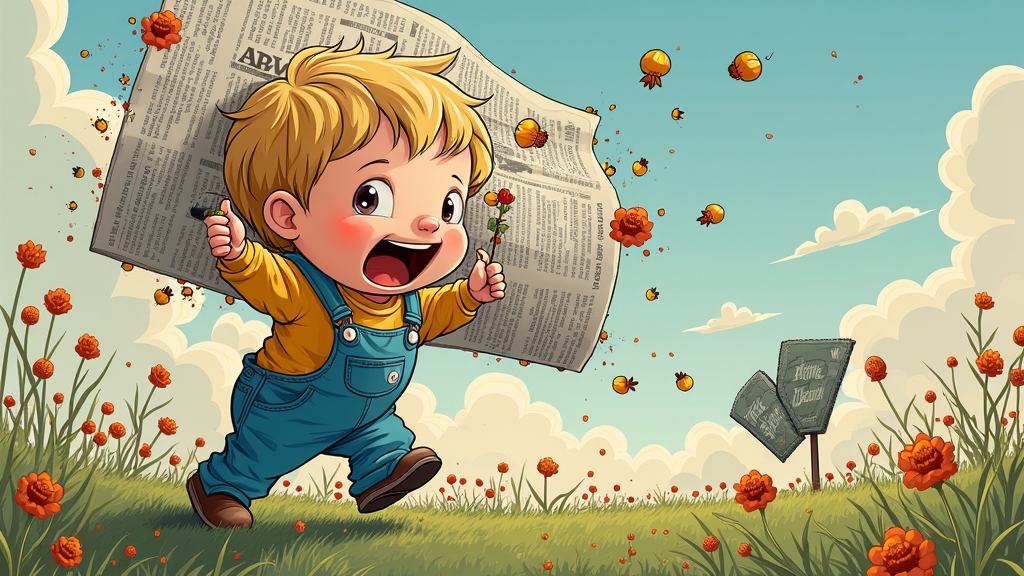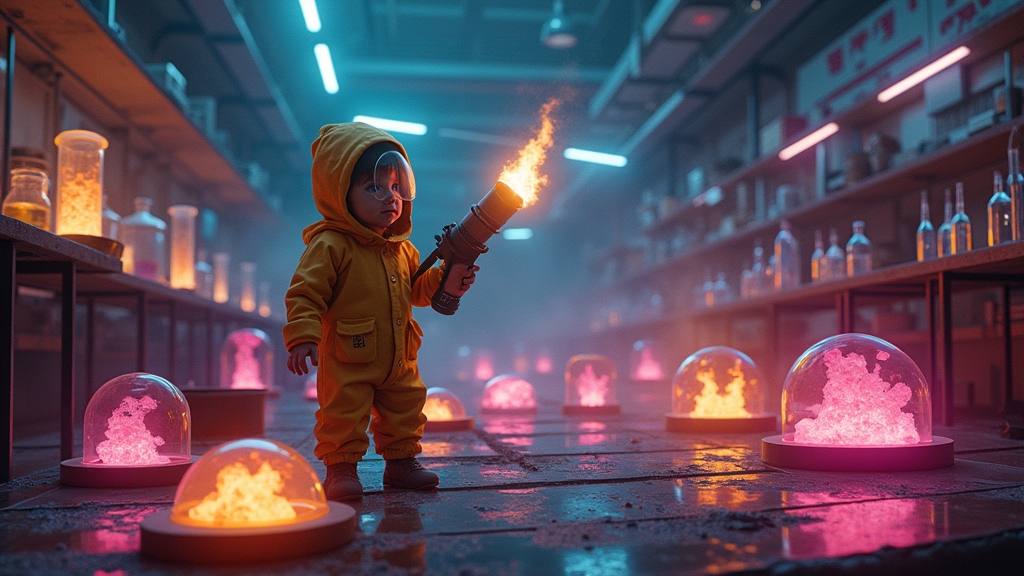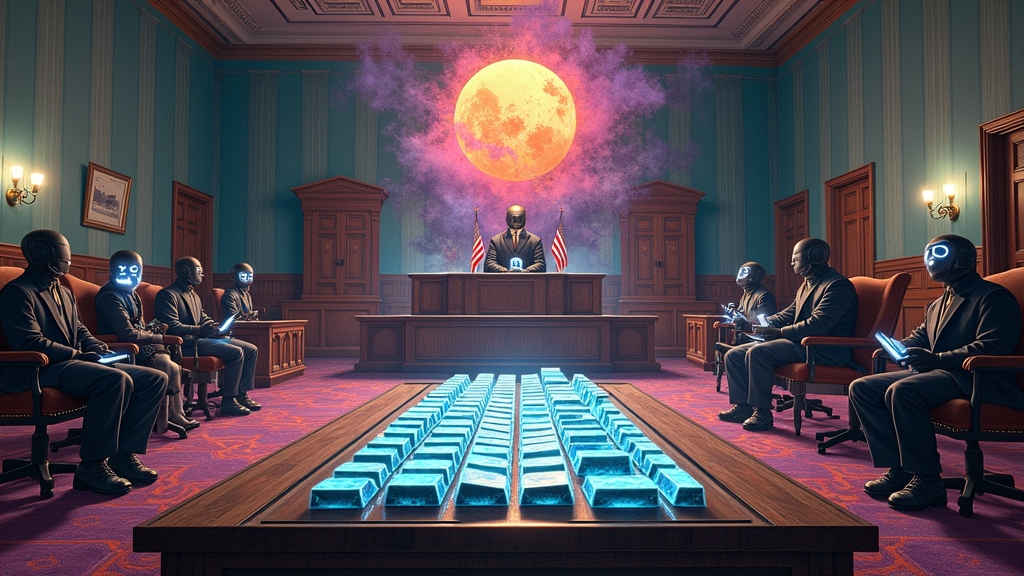PHOTOGRAPHER DISCOVERS NEWSPAPERS REPLACED HIM WITH DRUNK TODDLER WIELDING CRAYON; CLAIMS “IT’S ACTUALLY AN IMPROVEMENT”
MUNICH – Local photographer Oliver Fiegel, 47, nearly choked on his bratwurst when he discovered a major German newspaper had replaced him with what appears to be either a severely intoxicated child or a particularly ambitious potato attempting digital art.
The front-page image showed a boy chasing a football on a pitch, except the wildflowers were floating in mid-air like confused ghosts, half the goal net had apparently gone on vacation, and the child’s hands resembled what scientists describe as “f@#king nightmare mittens.”
“At first I thought I was having a stroke,” said Fiegel, whose photography clients have mysteriously vanished faster than witness protection participants. “Then I read the caption: ‘generative illustration.’ That’s corporate-speak for ‘we fired all the humans and now let digital hallucinations create our visuals.'”
NEWSPAPER DEFENDS “ARTISTIC CHOICES”
The newspaper’s editor-in-chief, Helmut Geldsparen, defended the decision, stating, “Why pay photographers thousands when we can pay a subscription service pennies to generate images that only occasionally make children cry?”
When pressed about the anatomical horrors depicted in the image, Geldsparen added, “Listen, if you want perfection, go look at reality. Our readers prefer their news with a side of existential dread and impossible bone structures.”
CREATIVE PROFESSIONALS CONCERNED, ALSO HUNGRY
The incident has sparked panic among other creative professionals who now face competition from what experts call “digital entities with the artistic sensibility of a lobotomized squid.”
Dr. Ima Screwed, Professor of Career Suicide at the University of Economic Despair, explains: “We’re seeing a 372% increase in photographers, illustrators, and writers drinking before noon. Most have updated their LinkedIn profiles to read ‘Will work for actual food, not the digital kind these silicon bastards don’t even need.'”
TECHNOLOGY COMPANIES RESPOND
Tech firms behind these generative technologies have reassured creative professionals that their jobs are completely safe, provided they’re comfortable with a 98% pay cut and occasional work reviewing images of deformed hands to help train the very systems replacing them.
“We see this as a collaboration between humans and technology,” said Chad Moneybags, CEO of ArtIsDeadCorp. “The human provides centuries of artistic tradition and decades of training, while our technology provides unemployability and existential crisis. It’s a win-win!”
EXPERTS PREDICT FUTURE TRENDS
Future job prospects look bleak for photographers, with 73% expected to pivot to careers as “Instagram filter explainers” or “remember-when-art-was-made-by-humans tour guides.”
According to Professor Seymour Reality of the Institute for Obvious Conclusions, “Soon newspapers won’t even need to generate new images. They’ll just run the same floating wildflowers and deformed hands for every story, from celebrity weddings to nuclear disasters. Readers will adapt, like they’ve adapted to trusting news sources that can’t tell the difference between a human hand and a melted starfish.”
As of press time, Fiegel has reportedly opened a new business photographing the horrified expressions of people looking at AI-generated images of their loved ones.




